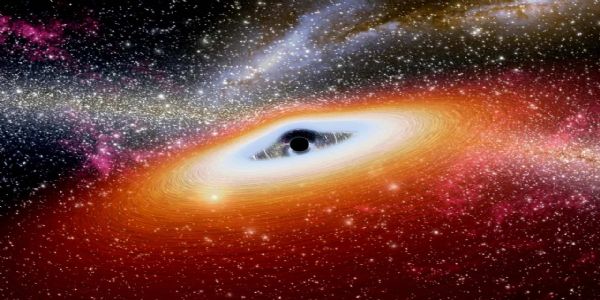NASA's James Webb discovers most distant supermassive black hole to date
The black hole found inside CEERS 1019 shares similarities with the one present at the centre of the Milky Way galaxy, which is 4.6 million times greater than the mass of the sun, NASA stated. The newly-discovered black hole is also not as bright as the massive behemoths which have been detected previously.
Total Views |
James Webb Space Telescope of space agency NASA has discovered the most distant supermassive black hole to date, which appears to be active, said the agency on Thursday.

The galaxy, which is called CEERS 1019, has lived for more than 570 million years after the big bang, and the black hole present in it is less massive compared to any other yet discovered in the early universe.
Meanwhile, 11 galaxies which existed when the universe had lived for only 470 to 675 million years have also been identified by the James Webb telescope, as stated by NASA.
The black hole found inside CEERS 1019 shares similarities with the one present at the centre of the Milky Way galaxy, which is 4.6 million times greater than the mass of the sun, NASA stated. The newly-discovered black hole is also not as bright as the massive behemoths which have been detected previously.
🌌 @NASAWebb detected the most distant active supermassive black hole to date! https://t.co/UHBvFaiHCS pic.twitter.com/7g9ls4Ov0v
— NASA (@NASA) July 6, 2023
"Researchers have long known that there must be lower-mass black holes in the early universe. Webb is the first observatory that can capture them so clearly," stated Dale Kocevski of Colby College in Waterville.
NASA stated that the black hole, though smaller, existed so many years back that astronomers are finding it difficult to explain how it was formed after the universe began.
James Webb verifying galaxies with precision
The James Webb telescope helps scientists find and verify theories using more precise information, in comparison to other telescopes. According to NASA, researchers can see how much gas is being ingested by the black hole and determine the star-formation rate of its galaxy.
Astronomer at the University of Texas at Austin Steven Finkelstein said, "Until now, research about objects in the early universe was largely theoretical. With Webb, not only can we see black holes and galaxies at extreme distances, we can now start to accurately measure them. That's the tremendous power of this telescope."
.
.

